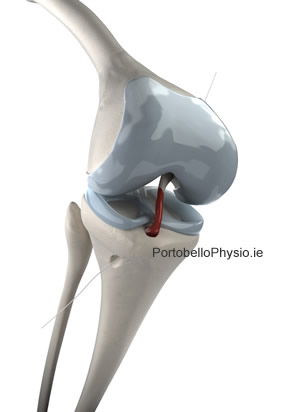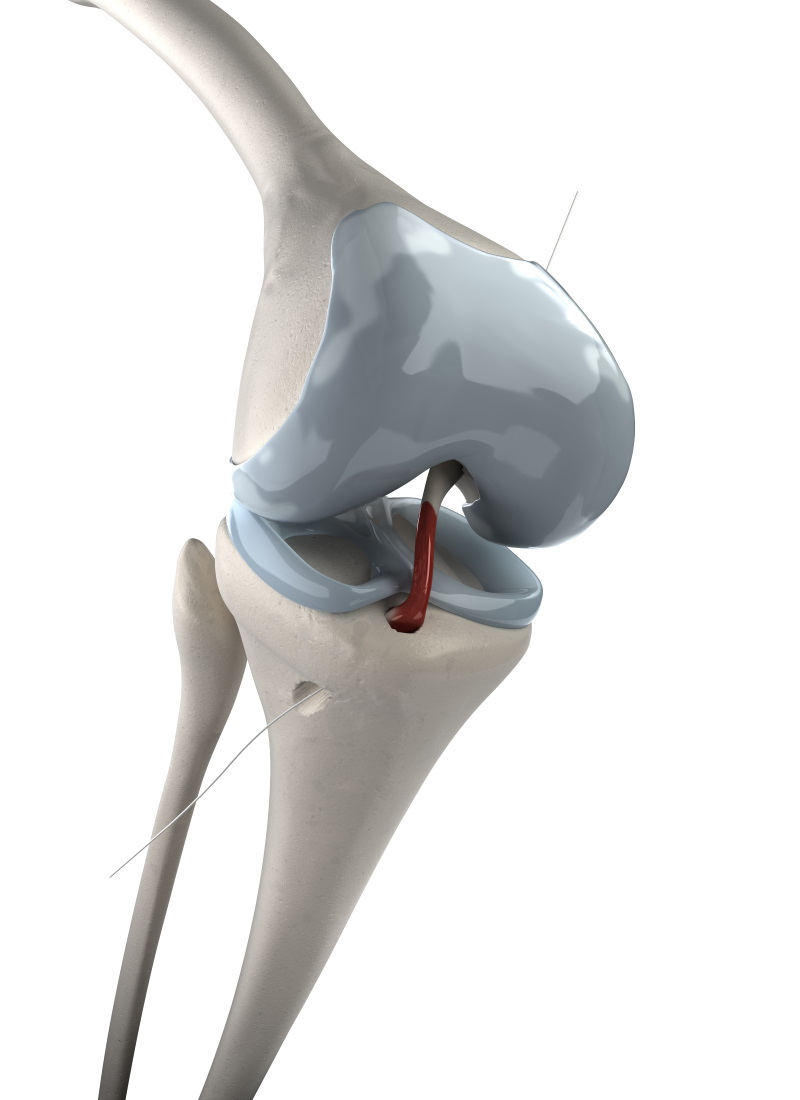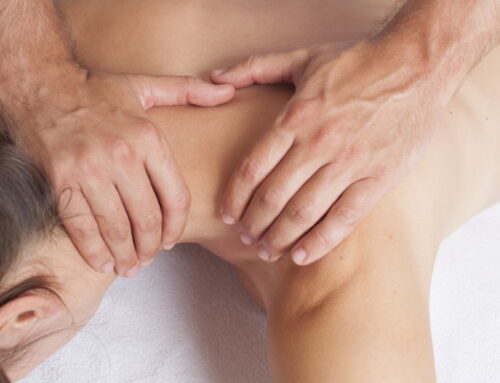Our body contains many ligaments, which are very strong bands of connective tissues that stabilise our joints. Their job is to connect bones across a joint, and to keep everything in line for safe, supported movement.

The anterior cruciate ligament (ACL) is one of four strong ligaments that connect the bones around the knee joint; its job is to minimise stress on the knee and to ensure that our lower leg bone (tibia) doesn’t move too far forward in relation to our thigh bone (femur).
The sides of the knee are kept stable by the medial collateral ligament (MCL) and the lateral collateral ligament (LCL), and then it’s the anterior cruciate ligament (ACL) and the posterior cruciate ligament (PCL) that form an ‘X’ shape on the inside of the knee joint to keep the knee stable from front to back.
This kind of ligament arrangement, coupled with muscles in the thighs and legs, provide a usually secure, stable ‘cage’ to allow correct range of motion of the knee through the appropriate plane.
How does an ACL Ligament get injured?
A sprain occurs when the fibres of a ligament get stretched or torn, and this can happened to various degrees.
A first-degree sprain is a ligament that is stretched but with no fibres torn, while a second-degree sprain is a partially torn ligament. A third-degree sprain is a completely torn ligament.
The ACL is a very strong ligament, so considerable force is required to injure it. If the ACL becomes overstretched by a blow to the front of the knee; or a sudden stop and subsequent twisting movement, it may become torn.
Football; rugby and tennis- any sport that requires quick changes of direction or sudden deceleration, leaves people at risk of an ACL injury. It’s mostly a completely non-contact injury; you do it all by yourself.
Non-athletes are less prone to an ACL tear, but if a hyperextension or an over rotation happens (a bad misstep; an accident in high heels; a slip and scrabble to stay upright) happens, a torn ACL may be the result.
Degree of Injury
The tear may be partial or complete; the severity will depend on the force of the blow or the degree of the pivot. Many people describe a popping sensation at the time of the injury, and the knee immediately swells, causing acute pain.
About 50% of most ACL tears happen with injuries to other soft tissues in the knee, usually the medial collateral ligament or the medial meniscus.
A torn ACL will feel as if the knee is giving away and there’s a feeling of instability; as if your leg can no longer support itself and you buckle when you put weight on it.
Diagnosis and Repair of a damaged ACL
An injured ACL is usually a very painful injury, diagnoses is ultimately confirmed with an MRI to determine the exact ligaments involved, as well as the degree of damage. Once an ACL tear is diagnosed and confirmed by MRI there is two approaches to treatment:
- Conservative non-surgical approach consisting of a progressive rehabilitation program to help rebuild strength and stability in the knee joint,
- Surgery followed by an extensive rehabilitation program usually phased over a period of nine months in order to return the individual to full function and health.
or
There are a number of factors that determine what the most appropriate decision is for patients, these include the type or severity of the tear, patient’s age, level of physical activity and/or type of sport they hope to return to, and personal or life circumstances considering ACL reconstruction is a major operation and involves a lengthy post-op recovery period.
Rehabilitation of ACL Injury
Regardless of which approach a patient decides to take, all victims of ACL injury must undergo extensive physiotherapy treatment to regain lost movement and help rebuild the strength and stability of the knee. Rehabilitation of an ACL injury is a lengthy process, and if you have had surgery (which involves use of a graft usually taken from the hamstring or patella tendon) the new graft will need time to heal and strengthen in its new environment.
At Portobello Physiotherapy Clinic, we will progress you through your rehabilitation in line with post-surgical orthopaedic guidelines and design a comprehensive rehabilitation program tailored to your individual needs and sporting goals.
For more information call Portobello Physiotherapy Clinic on 01 476 3330.




